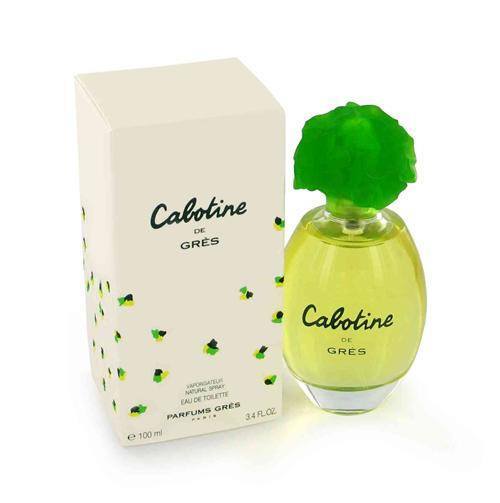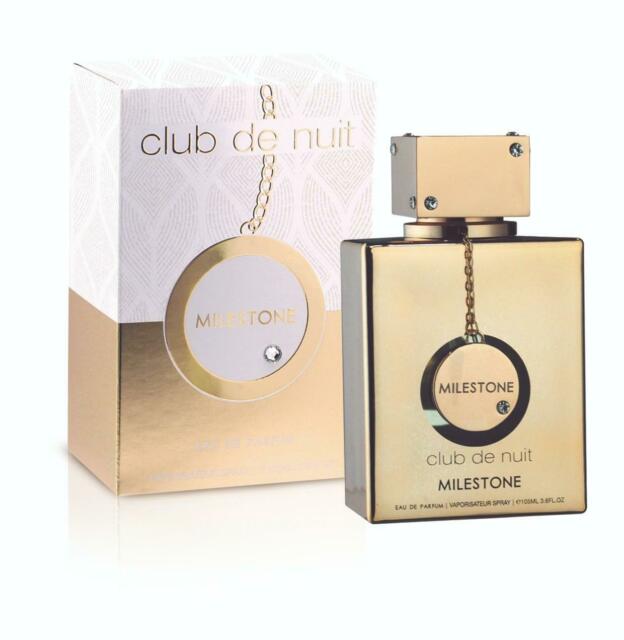
How you show up in the world isn’t solely defined by your appearance. It’s also impacted by the way you feel. When you’re wearing a perfume or cologne that makes you feel good, you radiate those positive vibes wherever you show up.
The clean-smelling perfume has become a mainstay in the world of fragrance. Their light, airy, refreshing scents are versatile and ideal for everyday wear, projecting confidence and effortless sophistication. With so many fragrances out there, finding the right clean fragrance can be a challenge. This guide will help you find fresh scents that reflect your personality and style.
Understanding Clean Smelling Perfume
Clean perfumes are all about capturing and conveying a sense of freshness. Imagine the fresh feeling of stepping out of a shower or the scent of crisp linens that you line-dried on a spring day. The best clean perfumes will have fragrance notes that make you feel like a gentle summer breeze. A clean-smelling perfume may have one or more of the following fragrance notes.
Citrus
Lemon, bergamot, grapefruit, and mandarin orange are some of the most common citrus notes used in clean fragrances. Citrusy notes add a vibrant and uplifting note to many products, making them great for casual settings. These notes come from plants that are often native to tropical climates, bringing the essence of summer to a perfume or cologne.
Related Products:
Floral
Delicate flower-based notes such as lavender, jasmine, lily of the valley, and rose add a touch of sweetness without overwhelming the senses. Floral notes are often associated with spring and the freshness of air-dried clothes. Subtle floral accords may also add a powdery vibe to a clean fragrance.
Related Products:
Musky
Originally, musky notes were sourced from the glands of certain animals. Modern musky accords make up the base layer of a fragrance and have their place in a clean-smelling perfume. Compounds such as white musk and musk ambrette often complement beauty and personal care products with a subtle warmth and depth.
Related Products:
Ozonic Notes
Clean-smelling fragrances often feature essences that are fresh and aquatic. Known as ozonic notes, they often bring to mind the fresh seaside air or clean laundry waving gently in a summer breeze. Some products with ozonic notes also include subtle undertones of metal that add a distinct crystalline freshness.
Related Products:
As you begin exploring clean-selling perfumes, it’s important to understand how these various notes fit into the larger scent profile of a particular product.
Exploring Fresh Fragrance Families
A clean-smelling perfume or cologne is usually part of a fragrance family, regardless of how simple or complex its notes are. Citrus, floral, and aquatic are three fragrance families that have been touched on in this guide. Consider these additional fragrance families when looking for products that are uplifting, refreshing, or invigorating:
- Chypre: Taken from the French word for “Cyprus”, chypre fragrances are typically based on bergamot, labdanum, and oakmoss. Oakmoss is sometimes called “chypre powder.”
- Fougère: Based on lavender, coumarin, or oakmoss, these scents are often herbaceous with subtle woody notes. Many men’s colognes are part of this family, but some unisex fragrances and perfumes are based on a Fougere scent profile. Fougere is French for “fern.”
- Green: This fragrance family is a modern spin on Chypre, emphasizing plant-inspired scents such as cucumber, grass, and leaves.
- Fruity: Non-citrus fruit accords such as apple, peach, and raspberry are used as scent notes for perfumes and colognes. Fragrance brands may combine fruity accords with florals, citrus notes, and earthy undertones for a unique spin on freshness.
- Gourmand: Fragrances that feature scent compounds associated with food such as vanilla and honey are gourmand scents. Some gourmand fragrances feature natural notes such as coconut that are optimistic and refreshing.
Fragrance families are a good starting point when searching for the perfect clean-smelling perfume. Knowing the components of a fragrance and how they’re structured helps you narrow your search.
Breaking It Down
Most fragrances are made up of several notes existing on one of three layers, often visualized as a pyramid, based on how quickly they’re detected and how long they last on the skin.
Top Notes
Sometimes called head notes, the top notes make up the top layer of the pyramid. These are the scents that you smell first when applying a fragrance. Top notes shape the first impression that a perfume creates. Generally, top notes evaporate quickly, lasting for a few minutes before transitioning into the next layer.
Common top notes include the following scent notes:
- Citrus: Lemon, orange, and bergamot often create sparkling openings that project a light, refreshing vibe.
- Floral: Lighter flowery accords such as lavender and rose add a gentle sweetness that helps set the stage for a clean-smelling perfume.
- Fruity: Similar to floral accords, lighter fruits such as berries and apples introduce a soft sweetness that establishes an uplifting first impression.
- Herbal: Basil, anise, and sage add a light herbal touch that is quickly perceived by others.
“Clean” is in the eye (or the nose) of the beholder, but a clean-smelling perfume usually has a top layer that is light and pleasant.
Middle Notes
The middle notes make up the heart or middle layer of a fragrance. Often called heart notes, these accords help retain some of the top layer while expanding the scent profile of the perfume. Middle notes make up around 70 percent of the fragrance and last longer than top notes. The heart notes are often responsible for the fragrance family that characterizes a perfume or cologne.
Heart notes are often sourced from potent and richly scented extracts such as floral or spicy oils. They make a lasting impression and are usually evident for the life of the perfume. They also provide a buffer between the opening impression and the eventual effect of the fragrance. Consider these examples of middle notes:
- Floral: Oils of floral accords such as jasmine, geranium, and ylang-ylang are commonly used as heart notes, representing the true essence of a perfume.
- Citrus: Neroli, orange, yuzu, and lime are examples of notes used to establish the heart of a citrusy perfume or cologne.
- Fruity: Your favorite clean perfume may have middle notes of pineapple, black currant, apple, and peach.
- Spicy: Cinnamon, nutmeg, and black pepper are spicy notes that form the middle layer of certain perfumes.
On average, the heart layer reveals itself between 10 and 30 minutes after spraying.
Base Notes
The base notes form the foundation of the pyramid, combining with the heart notes to create the overall perfume’s effect. Base notes are often rich and heavy, lasting for several hours against the skin. On their own, these compounds are usually perceived as unpleasant. When blended with the upper notes, they add depth, resonance, and complexity to your perfume or cologne. Base notes combine with the oils on the skin for a unique effect that varies from user to user.
Sometimes a product’s fragrance family is influenced by the accords used as base notes. Popular base notes include the following:
- Woody: Notes of sandalwood, cedarwood, and vetiver often form the base in many fragrances. Oud (also known as agarwood) is often found in exotic, Eastern fragrances and lasts a very long time. Patchouli is often a base component in woody fragrances.
- Amber: Many perfumes have a rich sensuality to them due to amber notes in the base. Warm and resinous, amber notes include ambergris, labdanum, and various musks. Historically, amber notes were sourced from animals, but today, they’re synthetically created.
- Other: Leather, tobacco, and moss are other common base notes. Sometimes they are blended with vanilla and tonka bean to add sensuality to a perfume or cologne.
For a clean-smelling perfume, white musk is probably the most common base ingredient. Generated from ambrette flower seeds, it lends a soft, powdery, and clean quality to a light perfume.
Choosing a Clean Smelling Perfume
Now that you know more about what goes into perfume, it’s important to know what you’re buying. The concentration of scent accords in a perfume helps you to understand how light or heavy a perfume is. In the strictest sense, fragrances are usually classified according to dilution:
- Eau Fraiche: This usually applies to light fragrances that are sold as body sprays, splashes, or mists. Their scent accords make up less than 3% of their volume. They’re usually diluted with water instead of alcohol or oil.
- Eau de Cologne: These products have around 5% of scent compounds, compared to between 70 to 80% alcohol and 5 to 15% water. EDC sprays are great for a light freshening or refresh, but they don’t last long.
- Eau de Toilette: Many perfumes and colognes are eau de toilette or EDT products with at least 10% of their volumes made of scent compounds. EDT sprays may be lighter or heavier depending on their composition.
- Eau de Parfum: EDP products have scent concentrations of 15 percent or greater. They last longer than similar EDT fragrances and should be used sparingly if you’re going for a clean effect.
Pure perfume is commonly marketed as “extrait de parfum” or simply “parfum.” Such products are usually rich, heavy, and long-lasting. A little parfum goes a long way, so be careful if you’re going for light and fresh.
Finding Your Perfect Clean Scent
Scent preferences are subjective, so exploration and reflection are critical to finding a clean-smelling perfume that works. Consider these factors as you explore:
- Personality: Are you into softer and soothing fragrances or do you gravitate towards sparkling and invigorating aromas? Clean perfumes offer a range of effects that should reflect your personality.
- Time and place: SItuations matter when it comes to fragrance. Clean fragrances are versatile, but some products are better suited for certain occasions. Go with citrus or ozonic scents for more casual, daytime environments like the office or running errands. Perfumes with musky and woody undertones tend to work better for a night out on the town.
- Seasonality: Fresh, clean scents hold a special appeal during the warmer months. You may find some scents are delightful year-round, especially those with stronger floral or earthy accords.
It's not uncommon to have multiple clean-smelling perfumes, something for different moods, events, and seasons.
Getting the Most Out of Your Fragrance
The effect that a fragrance has on you and others doesn’t depend solely on scent notes and concentrations. How and where you apply a clean-smelling perfume is critical to how it will be perceived by others. Consider these dos and don’ts to get the most out of your favorite clean fragrance:
- DO spray your perfume on pulse points such as the wrists, behind the earlobes, and on the inside of elbows. These are places where your body generates the most heat helping to retain scent for longer.
- DON’T rub a fragrance into the skin as this causes the scent accords to break down much faster.
- DO spray your perfume on hair and clothes as their structure helps to retain scent more lightly. Be sure to test for staining on a small, inconspicuous area first.
- DON’T spray your fragrance in the air and walk into the cloud. This is not an effective way to retain scents on your body long enough for detection by others.
- DO spray perfume on skin that is clean and moisturized with a fragrance-free lotion, cream, or oil. This helps the aroma to last longer without being affected by the scent of other toiletries such as deodorant, hair products, and cleansers.
A clean-smelling perfume may not come across as such if it’s competing with scents from other products.
Showing Up as Your Best Self
Finding the right fragrance means trying it on your skin to see how it performs with your unique body chemistry. With LaBelle Perfumes as your trusted source for clean-smelling perfume, you won’t spend a lot of money finding fresh scents that reflect your individuality and make you the main character in your story. From sparkling citrusy body mists to sweet aromatic blends that radiate joy and passion, the right perfume is waiting to delight your senses and those privileged enough to be in your presence. Call us at 305-633-1946 to find clean-smelling products you’ll love.
Sources:
- https://www.fragrancex.com/blog/fragrance-notes/
- https://www.alphaaromatics.com/blog/the-notes-of-fragrance/
- https://www.southernliving.com/fashion-beauty/beauty-makeup/where-to-spray-perfume











0 comments